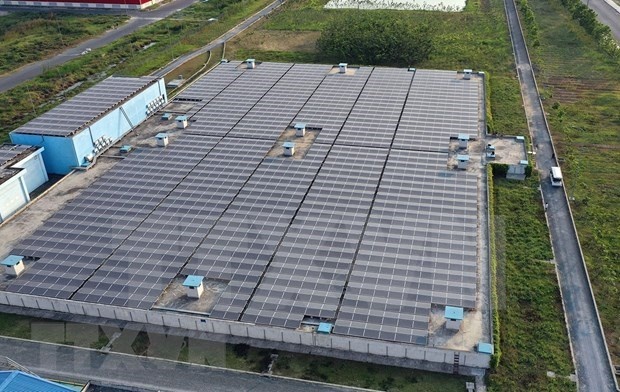WB pleges to support Vietnam to become high-income economy by 2045
 |
| Vietnam is among three top countries in renewable energy reform in the Asia-Pacific region (Photo: VNA) |
Hanoi – World Bank (WB) Regional Vice President for East Asia and Pacific Manuela V. Ferro on March 25 concluded her five-day visit to Vietnam.
During her first visit to Vietnam, Ferro had a meeting with Prime Minister Pham Minh Chinh, National Assembly Chairman Vuong Dinh Hue, and other senior officials of Vietnam.
During the meetings, both sides discussed development priorities and challenges of Vietnam, as well as how the country can use support of the World Bank to achieve transformational and tangible improvements in the lives of the Vietnamese people.
A highlight of the visit is the agreement between Ferro and PM Chinh to jointly produce a report - Vietnam 2045 that will outline a roadmap and solutions for Vietnam to realise its aspiration of becoming a high-income economy by 2045.
The report will take stock of the pace of reforms laid out in 2016’s Vietnam 2035 roadmap, analyse how Vietnam’s economic trajectory has been affected by the COVID-19 pandemic and other global mega-trends, and provide recommendations to inform policy reform discussions leading up to the 14th Party Congress, scheduled for 2026.
Ferro underlined the progress in the partnership between Vietnam and the WB, adding that the WB will propose innovative solutions that address new development challenges and fit the unique profile of Vietnam’s development opportunities.
At her working session with the Vietnamese Government leader, Ferro pledged that the WB will assist Vietnam to realise its goals of becoming a high-income economy by 2045 and reaching net zero emissions by 2050.
The WB Vice President also visited Ho Chi Minh City to expand cooperation between the bank and the city, the largest economic hub of Vietnam.
During her working session with Chairman of the municipal People’s Committee Pham Van Mai, the two sides discussed major challenges facing the city during the post-pandemic economic recovery and measures to mobilise brainpower and financial resources from the WB to improve its competitiveness. A joint working group between the WB and the city was also set up to sketch out cooperation plans for following years.
The World Bank’s current portfolio in Vietnam consists of 33 projects, worth a total of 5.72 billion USD focused on transforming livelihoods and increasing infrastructure’s resilience to climate risks, education, health care, transport, energy, water resource management, and urban resilience.
Since its comback to Vietnam in 1994, the WB has committed a total of more than 25.3 billion USD toward financing Vietnam’s development.
What the stars mean:
★ Poor ★ ★ Promising ★★★ Good ★★★★ Very good ★★★★★ Exceptional
 Tag:
Tag:
Related Contents
Latest News
More News
- Innovation to support modern healthcare development (January 07, 2026 | 10:00)
- Six localities record double-digit growth as regional performance diverges in 2025 (January 06, 2026 | 18:00)
- E-commerce market undergoes transformation amid rising competition and regulation (January 06, 2026 | 17:54)
- Vietnam’s industrial output hits seven-year high in 2025 (January 06, 2026 | 17:47)
- GELEX’s credit rating outlook upgraded to 'Positive' by VIS Rating (January 06, 2026 | 16:49)
- Finance sector lays firm groundwork for 2026 after major reform (January 06, 2026 | 15:30)
- Vietnam’s seafood exports surpass $11 billion in 2025 (January 06, 2026 | 08:51)
- Vietnam GDP posts second-strongest growth since 2011 (January 06, 2026 | 08:35)
- Double-digit GDP growth within reach with shift to higher-value expansion (January 06, 2026 | 08:33)
- Takeda Vietnam awarded for ongoing support of Vietnam’s sustainability efforts (December 31, 2025 | 21:00)






















 Mobile Version
Mobile Version